Stucco gilding technology
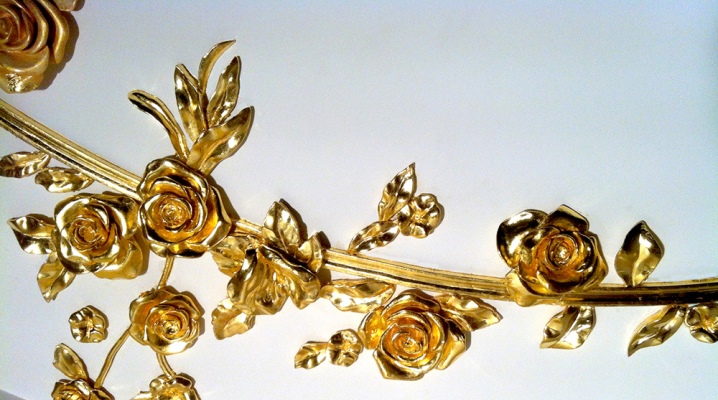
Gilding is one of the most popular stucco decoration methods. Such decor elements fit perfectly into the classic style, making the interior bright and luxurious. They provide the styling of antique buildings, making them warmer and more sunny. With their help, you can highlight accents. Gilding of stucco elements is performed using different materials, it is necessary to understand the features of this technology.
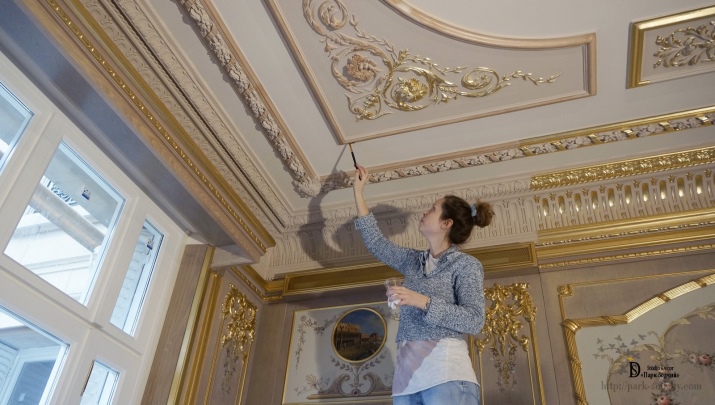
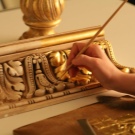
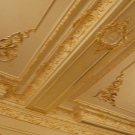
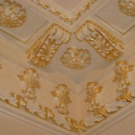


Materials (edit)
By decorating stucco molding is meant changing its color palette. For the perfect execution of gilding, certain skills and aesthetic taste are required. There are several gilding techniques, most of them are easy to implement and provide a vivid embodiment of an artistic idea.

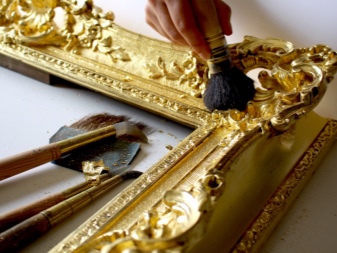
The following materials are used for stucco decoration:
- Gold leaf;
- gold leaf;
- paint.
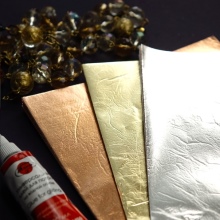
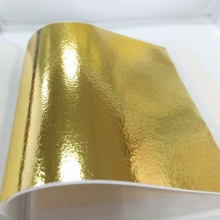
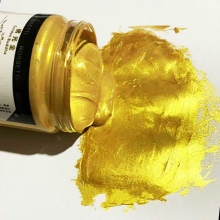
Decorating with gold leaf is the most expensive technique. Gold stucco molding gives the premises a luxurious and status look. Such decorative elements can often be found in interiors designed in the Baroque and Empire styles. The tinsel is thin sheets of gold. Even the hair is thicker. This is an expensive material used for surface gilding. This method is chosen by people who strive to achieve perfection in the interior, who do not accept compromises.
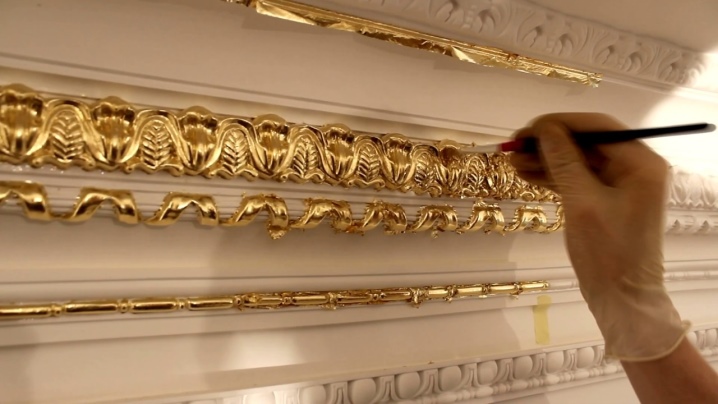
Before applying tinsel, the surface is sanded. Then the resin is applied to provide the gloss effect. Gold leaf gilding is similar to gilding leaf. The only difference is in the main material: gold sheets are replaced with gold leaf, which is a foil that does not contain precious metals. There are several types of potals: gold, silver, bronze. Moldings decorated with gold leaf look almost as beautiful as those covered with gold. The differences are only noticeable to professionals.
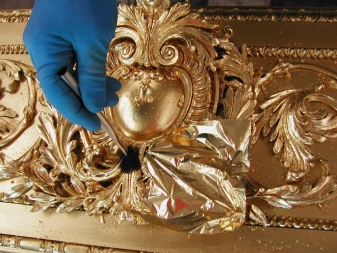
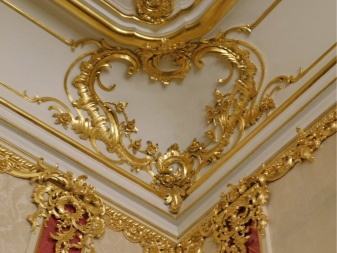
Gilding with paint is the most budgetary option. Plaster moldings are coated with a water-based acrylic compound. This type of paint is the most popular because it contains a large amount of metal particles. Silicone and latex dyes are used to process polyurethane stucco moldings. This material does not tolerate solvents well.
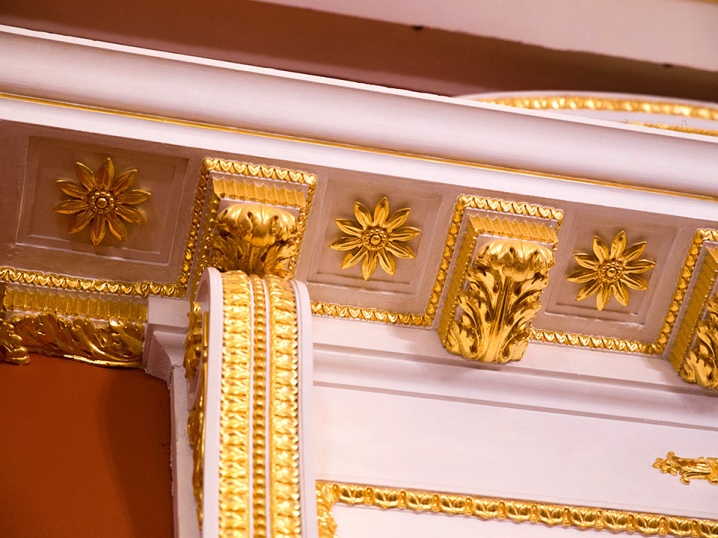
The gypsum stucco molding is coated with a primer before painting, and then a background coating is applied. Polyurethane products are decorated immediately after cleaning the surface from dust. And in one and in the other case, after the dye dries, the stucco molding is opened with varnish for protective purposes.
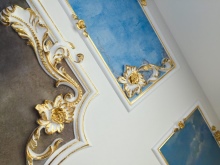
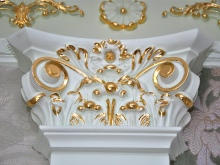

Acrylic-based gilding paints have the maximum saturation. Due to the presence of metallic inclusions in them in high concentration, the golden color looks like a real one. When using other types of dyes, the imitation is not so reliable.
The shade of gold is light and dark.
Acrylic paint has a creamy or liquid consistency, it is also available in the form of sprays. The advantage of the spray is that it does not require a brush to apply. Gold paint is applied by spraying. This eliminates the formation of streaks on the surface, the dye lays down evenly. Acrylic-based paints used to decorate gypsum stucco moldings are also sold in powder form. When breeding them, they are guided by the instructions.
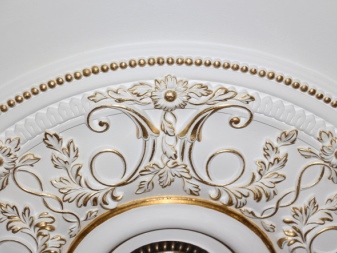

How to do it?
For gilding stucco with your own hands, you need to stock up on the tools and materials necessary for this work. The main task is to correctly draw the elements, you need to act very carefully. Prepare consumables to paint the stucco. Making gold leaf is a difficult process. The following tools help to successfully cope with this procedure: suede pillow, lampnzel, polishing device.
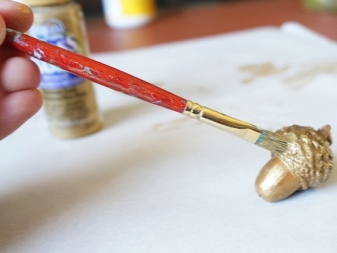

Using a suede pillow, leaf leaves are taken out of a book and cut with a knife for gilding. The lampzel is needed to carry the fragments. The polishing tool with an agate tip creates a glossy effect on the items. If the plans are to decorate the entire surface with gold leaf, then Mordan is applied along the entire perimeter, it is poured into the recesses. If necessary, decorate the ledges with glue with glue only cover them.
The process of applying gold leaf includes:
- cleaning of stucco elements;
- padding;
- applying mordan;
- gold leaf decoration;
- gilded surface treatment;
- applying a layer that performs a protective function.

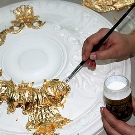
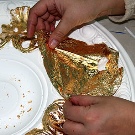
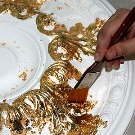
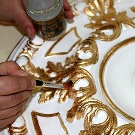
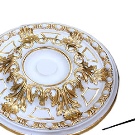
Particular attention is paid to surface preparation. The primer mixture is applied in 2 layers. Each takes half an hour to dry.
It is recommended to use tweezers to move the leaflets, as they stick to your hands.
After a few months, the gold leaf on the stucco molding can change color, become darker. To prevent this from happening, the gilding is covered with shellac. It protects the decorated areas from adverse external influences, retains the original shine of gold.

An acrylic-based dye is applied in a thin layer. It takes about 40 minutes to dry. At the final stage, the product is varnished. When restoring stucco decoration, the remnants of the old coating must be removed. Gold paint lasts a very long time, if necessary, the stucco molding can be restored.
Beautiful examples
Gilded plaster moldings are an exquisite decoration that transforms interior spaces. The molded products contribute to the creation of a special atmosphere and fit well into different styles. There are several techniques for artistic decoration of plaster molding. Stucco decoration makes it possible to stylize ordinary houses like palaces and castles.
The gilding of the stucco elements looks very impressive.

The most luxurious option is considered to be gold leaf decoration.
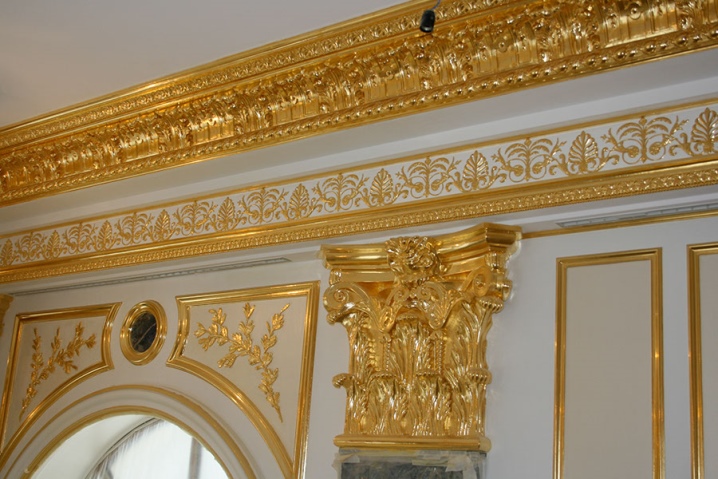
The gilded stucco molding makes the interiors exquisite. Such decor is appropriate not only in residential buildings, but also in restaurants and hotels.
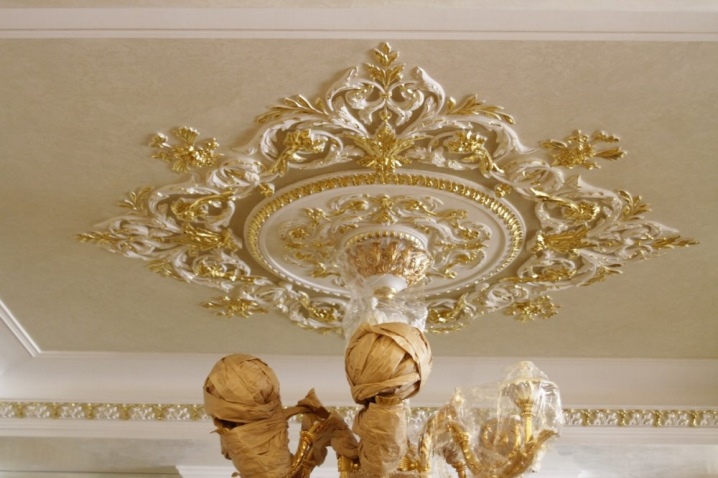
Gold plating is indistinguishable from real gold.
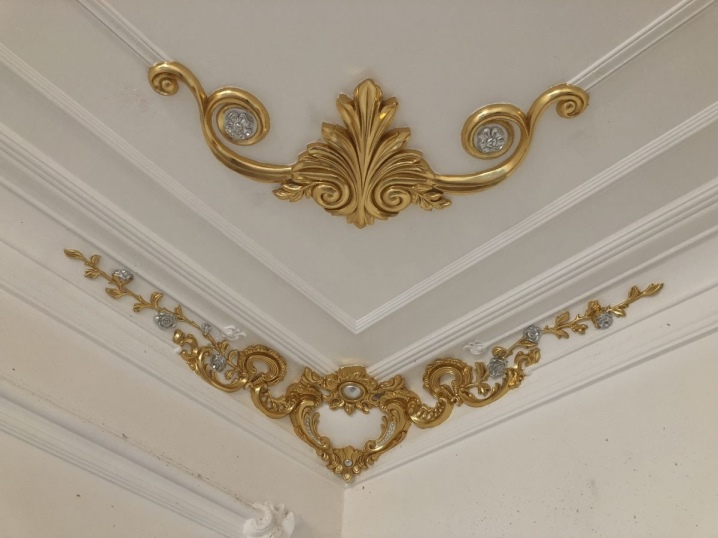
When decorating a room with stucco elements, observe the rule of the golden ratio. This is one of the most effective ways of interior decoration, stucco molding gives the rooms an aristocratic look, making them look like palaces.
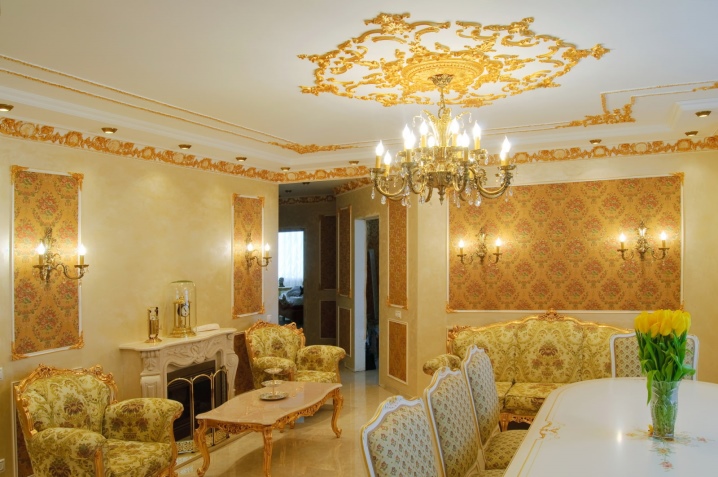
How to work with gold leaf and gold leaf, see the next video.













The comment was sent successfully.